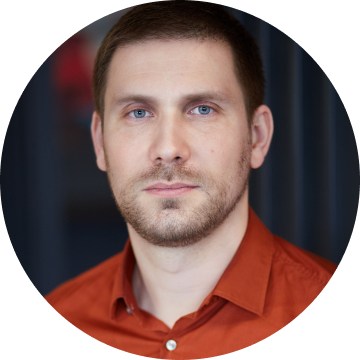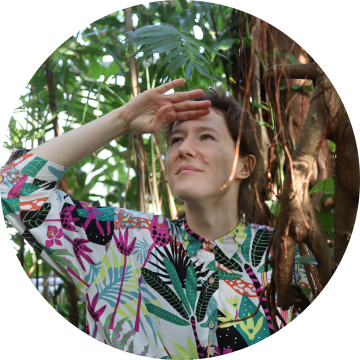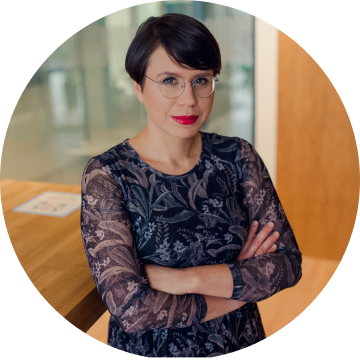Neurodiversity is a natural diversity of human minds. It covers the full spectrum of operational modes and nervous system development stages. Neuroatypical people show their own strengths and struggles that are different from those with typically functioning brains.
The environment can significantly affect they way we feel and behave. This is what tells us a neuroscientific model called the “neuroaesthetic triad”*. According to this model, three large-scale systems generate aesthetic experiences: sensory-motor, knowledge-meaning, and emotion-valuation systems. With this awareness, we can consciously shape spaces that affect our behavior and emotions.
* Source: Coburn, A., Vartanian, O., Chatterjee, A. (2017). Buildings, Beauty, and the Brain: A Neuroscience of Architectural Experience, „Journal of Cognitive Neuroscience”, May 11, 2017, p. 1–11.

The subject of neurodiversity is gaining importance. Its presence in public discourse and social media is growing (and this is an indicator of the awareness of future generations!). A survey was conducted, and its results analyzed to examine the state of knowledge of people from the business world. They were asked about real activities undertaken in their organizations. The results allowed putting forward some theses.
The numbers don’t lie: we have great motivation and space to make significant change.
One of the conditions for communication that leads to understanding is the ability to use common definitions. The report you are reading does just that. Plus, in a topic that is not yet fully discovered, but already very fashionable — which can lead to simplifications and misunderstandings. Therefore, Skanska’s initiative to organize the concepts and scope of neurodiversity is as pioneering as it is necessary.

The report is the first publication in Poland dedicated to the design of a friendly and inclusive office space, taking into account the needs of people with autism, ADHD, dysgraphia, dyslexia or dyscalculia. It raises awareness, denies stereotypes, indicates specific solutions regarding the arrangement of office space, and proposes a tool to facilitate the design of an inclusive office space.”

Neurobiology is a dynamically developing field of science. It begins to permeate many disciplines, including architecture. Neurobiological knowledge can support design decisions, which are often intuitive. Neurobiology also makes us realize that workspaces significantly affect the well-being of employees.

When we started working on the report, we did not realize how few proven solutions are out there for neuroatypical people. An interdisciplinary team, different perspectives and research methods allowed us to come up with specific proposals to be implemented in the space and organization of work. For us, this is just the beginning and a knowledge base for further projects. Can’t wait!

People on the autism spectrum and ADHD can bring as much value to companies as others, but they often don’t because the harsh, ill-considered, short-sighted economics of working conditions prevent them from doing so. Too many of us are overqualified for their jobs or do not work at all. Fortunately, it doesn’t have to be that way, and big companies are starting to see it.

There is a saying that reflects well the evolution of the office: “the office is my second home”. Once a confession of a workaholic — today of someone whose employer actually took care of the full comfort of the workspace. I believe that creating such places where we will feel “at home” is worth the effort and will allow us to really choose where we want and are able to work.

As a self-advocate on the autism spectrum, I am impressed with how respectfully the authors presented the topic of neurodiversity. It is noteworthy that the report focuses mainly on exploring the potential of neuroatypical people in the workplace — especially in offices. It allows you to understand what opportunities will be discovered when the architecture of the office environment takes into account the challenges, needs and skills of these employees.

The experience of being the direct supervisor of a neuroatypical person and working with neuroatypical people from other teams made me realize how important it is to create an atmosphere in which we are not afraid to talk about our needs. Awareness of atypicality allows us to adjust the style of cooperation and the space in which we operate to ensure comfortable working conditions and achieve professional goals.

While creating the report, we were focused on how to present the neurobiological content. We tried to find a format that would be useful and accessible to everyone. Working in an interdisciplinary team confirmed that neurobiology was of great importance not only in architecture but also in graphic design.

The pandemic overthrew the paradigm of what is effective and appropriate in the workplace. The discussion about well-being, both physical and mental, and the productivity that is its result has flared up again. In the pursuit of “healthy productivity”, thanks to this study, we gain know-how for being able to consciously choose the place and type of meeting with our neuroatypical colleagues.

I have always been interested in humans and their needs. Working on this report was another step for me to better understand the people around me. To say that the subject is complex is to say nothing. We’ve come a long way to bring readers closer to designing for neuroatypicals. I am very happy with the results, although I know that this is only the beginning!

Being diagnosed with ADHD was that missing piece for me, without which you get stuck halfway through the puzzle. I understood how many of my difficulties stem from neuroatypicality and how to turn them into my advantage. I thought that remote work was the perfect solution for me, but I would be happy to work from the office, with people who I miss while at home, if the space was arranged in accordance with the guidelines in the report.

Recently, I went through a training based on managing by strengths and realized what my superpowers were, to my own benefit, and my employer’s. There are many people who are born with neurotypical superpowers that can and should be utilised. You just need the right tools — and a properly designed office is just that — for them to fully flourish.

One of the conditions for communication that leads to understanding is the ability to use common definitions. The report you are reading does just that. Plus, in a topic that is not yet fully discovered, but already very fashionable — which can lead to simplifications and misunderstandings. Therefore, Skanska’s initiative to organize the concepts and scope of neurodiversity is as pioneering as it is necessary.

The report is the first publication in Poland dedicated to the design of a friendly and inclusive office space, taking into account the needs of people with autism, ADHD, dysgraphia, dyslexia or dyscalculia. It raises awareness, denies stereotypes, indicates specific solutions regarding the arrangement of office space, and proposes a tool to facilitate the design of an inclusive office space.”

Neurobiology is a dynamically developing field of science. It begins to permeate many disciplines, including architecture. Neurobiological knowledge can support design decisions, which are often intuitive. Neurobiology also makes us realize that workspaces significantly affect the well-being of employees.

When we started working on the report, we did not realize how few proven solutions are out there for neuroatypical people. An interdisciplinary team, different perspectives and research methods allowed us to come up with specific proposals to be implemented in the space and organization of work. For us, this is just the beginning and a knowledge base for further projects. Can’t wait!

People on the autism spectrum and ADHD can bring as much value to companies as others, but they often don’t because the harsh, ill-considered, short-sighted economics of working conditions prevent them from doing so. Too many of us are overqualified for their jobs or do not work at all. Fortunately, it doesn’t have to be that way, and big companies are starting to see it.

There is a saying that reflects well the evolution of the office: “the office is my second home”. Once a confession of a workaholic — today of someone whose employer actually took care of the full comfort of the workspace. I believe that creating such places where we will feel “at home” is worth the effort and will allow us to really choose where we want and are able to work.

As a self-advocate on the autism spectrum, I am impressed with how respectfully the authors presented the topic of neurodiversity. It is noteworthy that the report focuses mainly on exploring the potential of neuroatypical people in the workplace — especially in offices. It allows you to understand what opportunities will be discovered when the architecture of the office environment takes into account the challenges, needs and skills of these employees.

The experience of being the direct supervisor of a neuroatypical person and working with neuroatypical people from other teams made me realize how important it is to create an atmosphere in which we are not afraid to talk about our needs. Awareness of atypicality allows us to adjust the style of cooperation and the space in which we operate to ensure comfortable working conditions and achieve professional goals.

While creating the report, we were focused on how to present the neurobiological content. We tried to find a format that would be useful and accessible to everyone. Working in an interdisciplinary team confirmed that neurobiology was of great importance not only in architecture but also in graphic design.

The pandemic overthrew the paradigm of what is effective and appropriate in the workplace. The discussion about well-being, both physical and mental, and the productivity that is its result has flared up again. In the pursuit of “healthy productivity”, thanks to this study, we gain know-how for being able to consciously choose the place and type of meeting with our neuroatypical colleagues.

I have always been interested in humans and their needs. Working on this report was another step for me to better understand the people around me. To say that the subject is complex is to say nothing. We’ve come a long way to bring readers closer to designing for neuroatypicals. I am very happy with the results, although I know that this is only the beginning!

Being diagnosed with ADHD was that missing piece for me, without which you get stuck halfway through the puzzle. I understood how many of my difficulties stem from neuroatypicality and how to turn them into my advantage. I thought that remote work was the perfect solution for me, but I would be happy to work from the office, with people who I miss while at home, if the space was arranged in accordance with the guidelines in the report.

Recently, I went through a training based on managing by strengths and realized what my superpowers were, to my own benefit, and my employer’s. There are many people who are born with neurotypical superpowers that can and should be utilised. You just need the right tools — and a properly designed office is just that — for them to fully flourish.

One of the conditions for communication that leads to understanding is the ability to use common definitions. The report you are reading does just that. Plus, in a topic that is not yet fully discovered, but already very fashionable — which can lead to simplifications and misunderstandings. Therefore, Skanska’s initiative to organize the concepts and scope of neurodiversity is as pioneering as it is necessary.

The report is the first publication in Poland dedicated to the design of a friendly and inclusive office space, taking into account the needs of people with autism, ADHD, dysgraphia, dyslexia or dyscalculia. It raises awareness, denies stereotypes, indicates specific solutions regarding the arrangement of office space, and proposes a tool to facilitate the design of an inclusive office space.”

Neurobiology is a dynamically developing field of science. It begins to permeate many disciplines, including architecture. Neurobiological knowledge can support design decisions, which are often intuitive. Neurobiology also makes us realize that workspaces significantly affect the well-being of employees.

When we started working on the report, we did not realize how few proven solutions are out there for neuroatypical people. An interdisciplinary team, different perspectives and research methods allowed us to come up with specific proposals to be implemented in the space and organization of work. For us, this is just the beginning and a knowledge base for further projects. Can’t wait!

People on the autism spectrum and ADHD can bring as much value to companies as others, but they often don’t because the harsh, ill-considered, short-sighted economics of working conditions prevent them from doing so. Too many of us are overqualified for their jobs or do not work at all. Fortunately, it doesn’t have to be that way, and big companies are starting to see it.

There is a saying that reflects well the evolution of the office: “the office is my second home”. Once a confession of a workaholic — today of someone whose employer actually took care of the full comfort of the workspace. I believe that creating such places where we will feel “at home” is worth the effort and will allow us to really choose where we want and are able to work.

As a self-advocate on the autism spectrum, I am impressed with how respectfully the authors presented the topic of neurodiversity. It is noteworthy that the report focuses mainly on exploring the potential of neuroatypical people in the workplace — especially in offices. It allows you to understand what opportunities will be discovered when the architecture of the office environment takes into account the challenges, needs and skills of these employees.

The experience of being the direct supervisor of a neuroatypical person and working with neuroatypical people from other teams made me realize how important it is to create an atmosphere in which we are not afraid to talk about our needs. Awareness of atypicality allows us to adjust the style of cooperation and the space in which we operate to ensure comfortable working conditions and achieve professional goals.

While creating the report, we were focused on how to present the neurobiological content. We tried to find a format that would be useful and accessible to everyone. Working in an interdisciplinary team confirmed that neurobiology was of great importance not only in architecture but also in graphic design.

The pandemic overthrew the paradigm of what is effective and appropriate in the workplace. The discussion about well-being, both physical and mental, and the productivity that is its result has flared up again. In the pursuit of “healthy productivity”, thanks to this study, we gain know-how for being able to consciously choose the place and type of meeting with our neuroatypical colleagues.

I have always been interested in humans and their needs. Working on this report was another step for me to better understand the people around me. To say that the subject is complex is to say nothing. We’ve come a long way to bring readers closer to designing for neuroatypicals. I am very happy with the results, although I know that this is only the beginning!

Being diagnosed with ADHD was that missing piece for me, without which you get stuck halfway through the puzzle. I understood how many of my difficulties stem from neuroatypicality and how to turn them into my advantage. I thought that remote work was the perfect solution for me, but I would be happy to work from the office, with people who I miss while at home, if the space was arranged in accordance with the guidelines in the report.

Recently, I went through a training based on managing by strengths and realized what my superpowers were, to my own benefit, and my employer’s. There are many people who are born with neurotypical superpowers that can and should be utilised. You just need the right tools — and a properly designed office is just that — for them to fully flourish.


